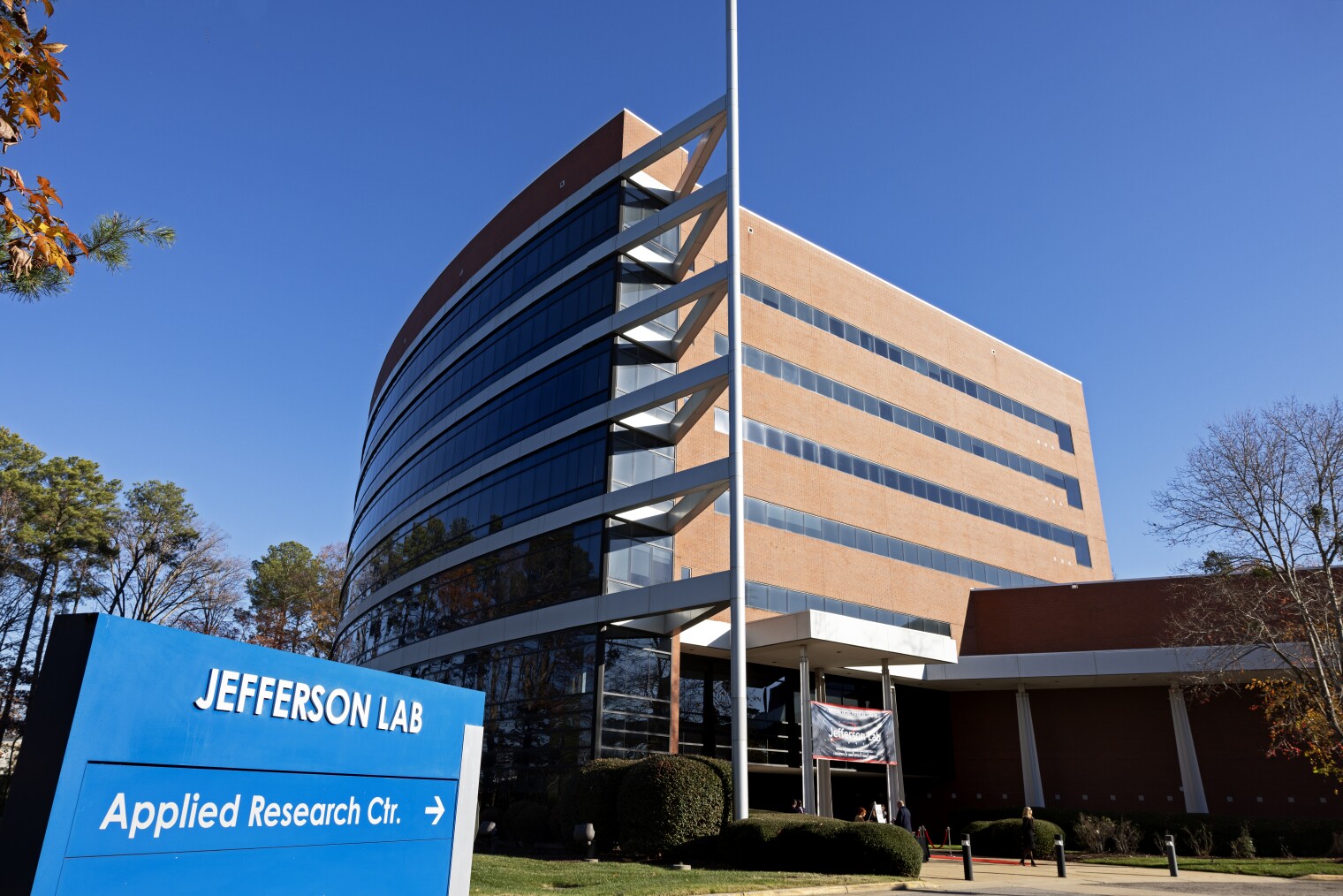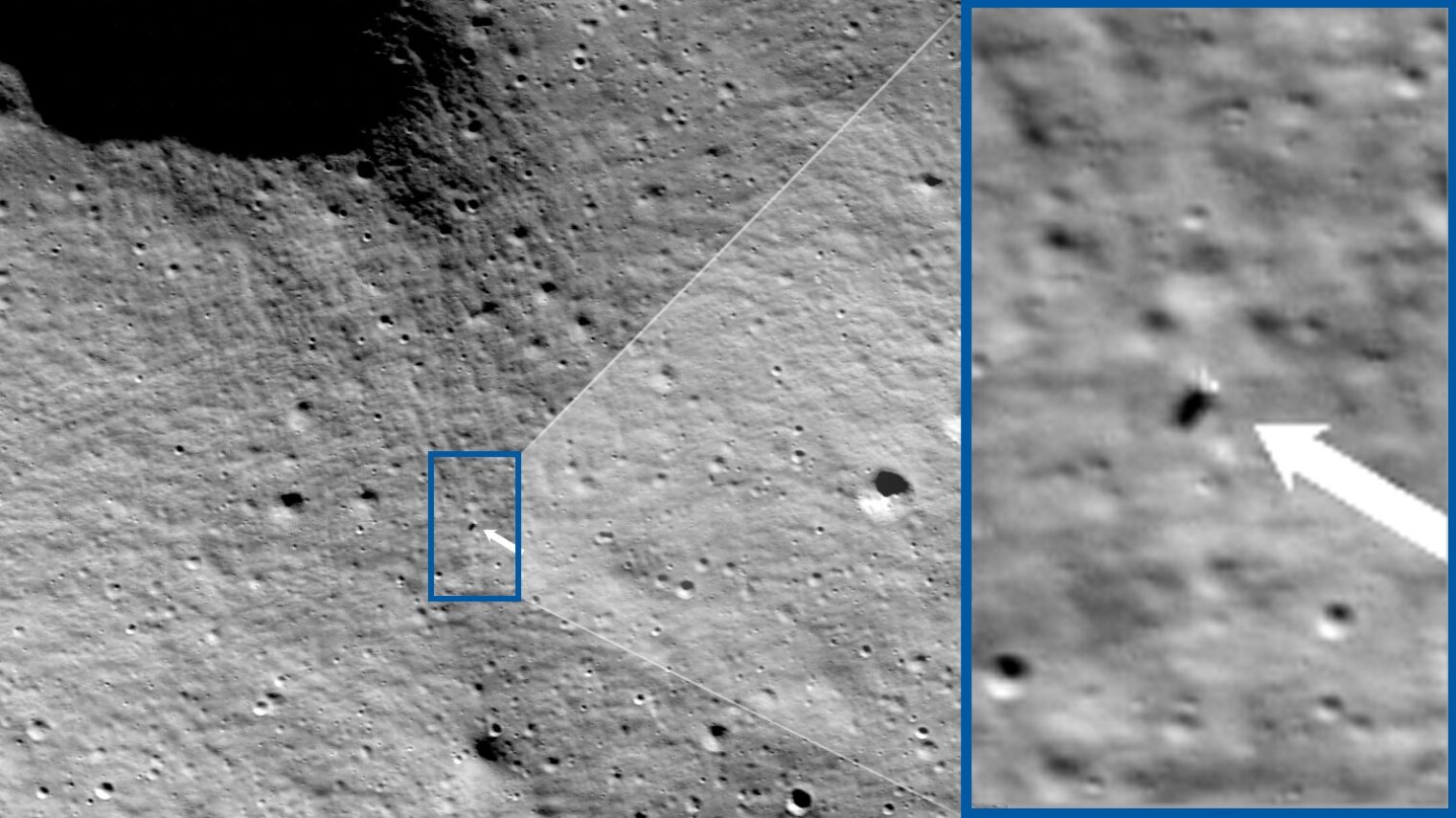| |
| FYI: Science Policy News from AIP |
| THIS WEEK |
|
|
|
|
|
|
| What’s Ahead |
 |
| A building on the campus of Jefferson Lab. (Aileen Devlin / Jefferson Lab) |
Competition Open for Jefferson Lab Management Contract
This month, the Department of Energy opened a competition to select a contractor to manage Jefferson Lab in Virginia, one of ten labs overseen by the DOE Office of Science. The lab presently focuses on nuclear physics but plans to become a multi-purpose lab in the coming years by constructing the High Performance Data Facility, a major new user facility offering infrastructure for data-intensive science. In announcing the competition, DOE mentioned the lab’s upcoming pivot and stated that the purpose of the competition is to award a new contract “that will result in improved contractor performance and cost efficiencies.” The winner will be expected to assume operations of the lab in June 2025.
The first step of the process is a request for information on perceived barriers to competition, with responses due March 6. The comments will inform DOE’s formal request for proposals. DOE used the same process for the Fermilab contract competition, which is also underway. Jefferson Lab currently is managed by Jefferson Science Associates, LLC, a subsidiary of the Southeastern Universities Research Association. SURA President Sean Hearne told FYI that the association will submit a proposal to continue operating the lab. At present, the lab employs around 850 people and has an annual budget of about $236 million.
Budget Negotiations Still Unresolved Ahead of Friday Deadline
With stopgap funding set to expire this Friday for a large group of federal agencies, congressional negotiators had hoped to finalize an appropriations agreement over the weekend but missed that target. Congressional leaders from both parties now plan to meet with the president tomorrow in a bid to hash out the remaining issues. The Department of Energy is among the agencies whose funding is set to expire this week, whereas most other science agencies are funded through March 8. Congress may resort to passing yet another stopgap measure to buy time for more negotiations. The uncertainty about the final outcome has had serious impacts on some agency programs, triggering mass layoffs at NASA’s Jet Propulsion Lab due to the divergence in funding proposals for the Mars Sample Return Project led by the lab. The split highlights regional differences in congressional priorities for NASA’s science programs.
Senators to Explore Subsurface Hydrogen as Energy Source
Opportunities and challenges associated with using hydrogen that is naturally generated underground, known as geologic hydrogen, will be explored at a hearing on Wednesday by the Senate Energy and Natural Resources Committee. Testifying are Evelyn Wang, director of the Advanced Research Projects Agency–Energy; Geoffrey Ellis, a research geologist at the U.S. Geological Survey; and Pete Johnson, CEO of the geologic hydrogen company Koloma. The company is among 16 teams selected this month by ARPA–E to receive a total of $20 million for research into geologic hydrogen. According to the agency, the grants represent “the first time that the U.S. government has competitively selected teams to research this kind of technology.”
Geophysicist Takes Helm of National Energy Technology Lab
This month, the Department of Energy named Marianne Walck as director of the National Energy Technology Lab, which focuses on fossil energy R&D. Walck previously was chief research officer at Idaho National Lab and she holds a doctorate in geophysics from Caltech. Brad Crabtree, the head of DOE’s Office of Fossil Energy and Carbon Management, stated that Walck’s expertise will help the lab with “building out geologic carbon dioxide storage capacity, developing domestic critical mineral supply chains from unconventional resources, increasing methane mitigation efforts, and scaling up carbon dioxide removal.” The lab has more than 1,400 employees and an annual budget exceeding $1 billion, with sites in West Virginia, Pennsylvania, Oregon, Texas, and Alaska.
|
|
| In Case You Missed It |
 |
| The Odysseus lunar lander imaged on Feb. 22 by NASA’s Lunar Reconnaissance Orbiter. (NASA / Goddard Space Flight Center / Arizona State University) |
In a First, Commercial Lunar Lander Survives Descent but Tips Over
The uncrewed lander Odysseus touched down on the Moon’s surface last week, the first landing by a private company and the first U.S. landing since 1972. The landing was not without issues, however. Laser rangefinders intended to guide the lander to the surface were not properly activated before the launch, but its controllers were able to improvise a solution using Lidar equipment included with a NASA technology demonstration experiment on board. The lander still ended up descending faster than intended, resulting in it tipping over. Since the tipped side carried communications antennae, the lander’s data transmission with Earth is slower than planned. The company that built the lander, Intuitive Machines, anticipates it will be able to continue communicating with the lander until Feb. 27. President Joe Biden issued a statement praising the landing, calling it “a thrilling step forward in a new era of space exploration.” Intuitive Machines plans to launch a second lander later this year.
White House Publishes Inventory of Sexual Harassment Policies at Science Agencies
The White House published an inventory this month of federal science agency policies, procedures, and resources relating to sex-based and sexual harassment involving extramural research awardees. The inventory, which includes public-facing and internal documents, was created by the Interagency Working Group on Safe and Inclusive STEM Environments — a group that was established by the White House Office of Science and Technology Policy in response to the CHIPS and Science Act of 2022 to coordinate agency efforts to combat harassment in research. The act directed OSTP to publish the inventory within 90 days, and the office’s delay in completing it prompted letters of concern from the House Science Committee and science societies, who noted that progress in creating cross-governmental anti-harassment guidelines would stall without the inventory. The act requires that the guidelines be published within six months of the inventory’s completion. As expected, the inventory reveals a patchwork of different policies and approaches to identifying, reporting, and reducing harassment across agencies. While all the agencies have policies covering internal staff, the inventory shows that not all agencies have policies explicitly covering extramural grant recipients.
NSF Awards $20 Million to Boost Capacity for Research Administration
The National Science Foundation announced last week it will provide $21.4 million to four projects to advance research administration infrastructure and support systems at non-R1 institutions. The awards are from NSF’s recently launched Growing Research Access for Nationally Transformative Equity and Diversity (GRANTED) program, which aims to help R2, R3, undergraduate and community colleges become more competitive against more well-funded research institutions in national research funding opportunities. The Atlanta University Center — a collaboration between Spelman College, Morehouse College, Morehouse School of Medicine, and Clark Atlanta University — will receive $14 million to create a hub for shared research administration and commercialization services that aims to become a model for strengthening research at HBCUs. The Hispanic Association of Colleges and Universities will receive $2 million to create institutes that offer professional development services and help Hispanic Serving Institutions share research resources and expertise. Pomona College and the University of Massachusetts, Dartmouth, will receive $1.7 million to study the challenges faced by researchers at emerging and undergraduate institutions, and Iowa State University will receive $3.7 million to implement a research administration internship program open to students from six institutions in Iowa.
New X-Ray Facility Funded by NSF Mid-scale Program
The National Science Foundation awarded $20 million this month to build an X-ray facility at the Cornell High Energy Synchrotron Source in New York. Called X-rays for Life Sciences, Environmental Sciences, Agriculture and Plant Sciences (XLEAP), the facility will use X-ray fluorescence to study the chemical makeup of living samples. The grant is the largest allowable under NSF’s Mid-Scale Research Infrastructure 1 program, which funds projects ranging from $4 million to 20 million that promise to provide “more advanced research capabilities relative to what is generally available to the general U.S. research community.” Other recent projects funded by the program include the design of a ultrahigh-intensity laser at the University of Rochester, the buildout of an offshore subduction zone observatory in the Pacific Northwest, and the creation of a prototype tornado resilience testing center at Iowa State University.
UN Poised to Consider Satellite Interference with Astronomy
The UN Committee on the Peaceful Uses of Outer Space (COPUOS) may start formally studying the impact of satellite interference with astronomy. A subcommittee agreed this month to propose that COPUOS take up the topic, and the full committee will vote on whether to do so at a meeting in June. However, COPUOS will require unanimous approval by the committee’s 103 member countries to pursue the issue, and a similar effort was rejected last year. The number of satellites in orbit has spiked in recent years and is likely to continue growing, prompting concerns from astronomers about how light and radio interference from these satellites could hinder telescopes.
|
|
| Upcoming Events |
All events are Eastern Time, unless otherwise noted. Listings do not imply endorsement. Events beyond this week are listed on our website.
Monday, February 26
Tuesday, February 27
Wednesday, February 28
Thursday, February 29
Friday, March 1
Sunday, March 3
Monday, March 4
Know of an upcoming science policy event either inside or outside the Beltway? Email us at fyi@aip.org.
|
|
| Opportunities |
|
Deadlines indicated in parentheses.
Job Openings
Solicitations
Know of an opportunity for scientists to engage in science policy? Email us at fyi@aip.org.
|
|
| Around the Web |
White House
Congress
Science, Society, and the Economy
Education and Workforce
Research Management
Labs and Facilities
Computing and Communications
Space
Weather, Climate, and Environment
Energy
Defense
Biomedical
International Affairs
|
|
|
| |
| This message is sent to you because your email address is on our subscribers list. To manage your FYI preferences and subscriptions, please click here . Or you can unsubscribe from all emails from AIP. AIP, 1 Physics Ellipse, MD 20740-3841
301.209.3100 - newsletters@aipcomm.org As a 501(c)(3) non-profit, AIP is a federation that advances the success of our Member Societies and an institute that engages in research and analysis to empower positive change in the physical sciences. The mission of AIP (American Institute of Physics) is to advance, promote, and serve the physical sciences for the benefit of humanity. |
|
| © 2024. American Institute of Physics |
|
|